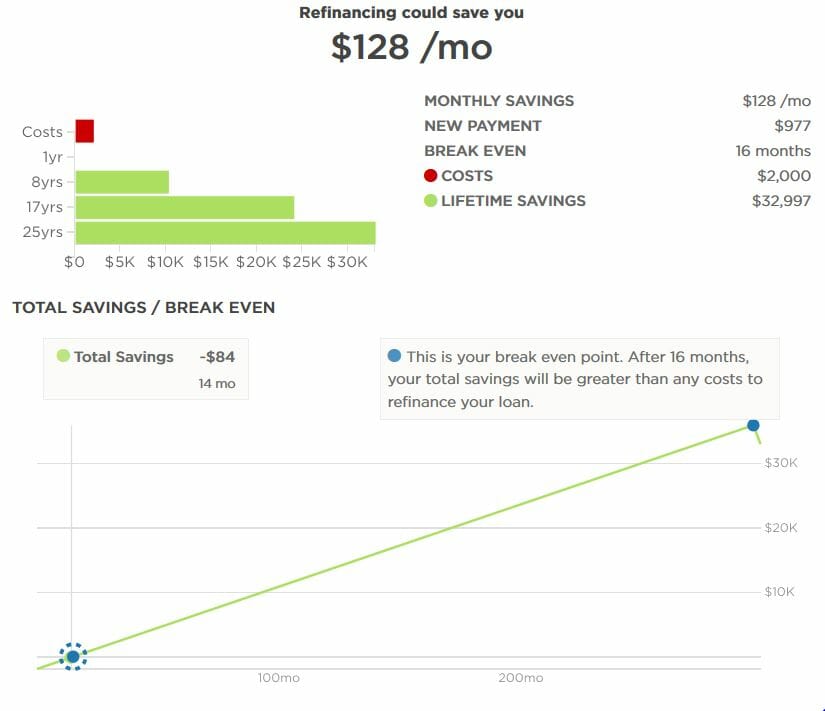
A Complete Guide to Refinancing Your Mortgage
Trying to decide whether to refinance a mortgage? In our guide, we walk you through how to refinance a mortgage and where to find the best rates.
Have you been in your current home mortgage for a few years? Do you see advertised mortgage rates well below what you’re locked in for? And do wonder if you could save money by refinancing?
If you’ve considered a refi on your existing home mortgage, there are a few things to consider. While the process itself isn’t difficult, it is a bit involved. You’ll want to shop around, and you should definitely ask yourself some questions first.
We’d like to smooth the process and help you decide your next mortgage move. Here’s everything you need to know if you are thinking about refinancing your home.
Check LendingTree for the list of mortgage rates from preferred providers
When Should You Refinance?
There are a few key instances in which you would probably consider refinancing your mortgage. Let’s talk about some of them.
Interest Rates Have Dropped
Following the housing crash in 2007-08, mortgage interest rates began to plummet. They reached an all-time record low of 3.31 percent on November 22, 2012 before trending back upward. Then, in June 2016, they dipped again, reaching as low as 3.56 percent.
Last month (August 2017), the average mortgage interest rate was 3.88 percent. Let’s say you bought your home eleven years ago, in July 2006, when the average interest rate was 6.76 percent. That’s a difference of 2.88 percent, and you should definitely look into refinancing your rate. You’ll certainly save yourself a pretty penny in the end.
But what if you think you could get a rate today that’s only better by a percent or two? Is that worth the time, effort, and money involved with a refi?
Well, even 1-2 percent can make for some serious savings on a mortgage. Just look at this comparison:

As you can see, a 30-year mortgage for a $200,000 home (with a $20,000 down payment) will cost you $177,840 in interest alone if your rate is 5.25 percent. However, if you were to lower that to 4.25 percent, you’d only pay $138,600 in interest (a savings of $39,240). And if you snagged a 3.25 percent rate, you’d only pay $101,880 (which means $75,960 saved).
That “only a percent” or two actually goes a long way.
We will talk about how to calculate the exact savings in just a bit. But for now, know that if interest rates have dropped, refinancing your home is at least worth considering.
Your Credit Score Has Improved
As you are surely already aware, your credit plays a role in determining the mortgage loans and rates for which you qualify. So, if your credit has changed for the better, a refi is worth considering.
When you first took out your original home loan, your credit history at the time was a significant deciding factor. Your lender used it to approve your loan and decide which interest rate they wanted to offer you.
In the years that have passed, have you paid off debts? Increased card limits? Have negative reports been removed from your credit? If so, your credit has likely improved and, in turn, you’re probably eligible for a better rate than you were when you first obtained your mortgage.
You Want to Lower Your Monthly Payment
One reason that some folks refinance their mortgage is to lower their monthly payments. This isn’t always the wisest decision, as it typically requires extending the mortgage length. However, in some cases, it’s necessary.
For example, let’s say that you’ve been in your home for ten years (with an original 30-year mortgage) and recently determined that your payment is too high. You’ve been slowly paying the debt down over the past decade, but the monthly bill has begun placing a strain on your budget. You’d like it lowered, but what can you do?
Well, you can refinance the now-reduced balance, with 20 years left, into a new 30-year mortgage. This will spread the remaining balance out over a longer period of time, lowering your monthly payments.
You can make this a smarter decision by also working to secure a reduced interest rate. However, you should be aware that, over time, you’re likely going to pay more by going this particular refinance route. As mentioned, though, it’s sometimes a necessity, and is something to consider if your monthly payments have become unmanageable.
You Need Cash
Some borrowers will consider a mortgage refi if they want to get cash out of their home’s equity. This method is called a cash-out refinance, and it is different than a HELOC, or home equity line of credit.
With a cash-out refinance, you’ll be refinancing the home for more than you currently owe, in order to pocket the cash for some other use. This is a route you might consider if you need money for a home remodel or the like.
Let’s say that you live in a home worth $300,000, but you only owe $200,000 on your mortgage. (In this case, you have $100,000 worth of equity built up in the home.) You need $60,000 to build an addition onto the back of the house, and decide that using your home’s equity is a good idea.
You have two options: cash-out refinance or HELOC. With the cash-out refinance, you’ll take out a new mortgage worth $265,000, then use $200,000 of that to pay off the original mortgage. In the end, you’ll only have one note on the home and will pocket the $60,000 (approximately, after closing costs and such).
Conversely, a HELOC involves taking a second loan out against the equity of your home. This $60,000 (or whatever number) line of credit could be taken out with your original lender or a new one; it doesn’t matter. Keep in mind, though, that if you spend against that line of credit, you will now have two monthly payments: one for the original mortgage and one to repay the HELOC.
HELOCs typically have higher interest rates compared to refinanced mortgages. However, while a cash-out refinance is simpler in terms of only managing one debt, a benefit with the HELOC is that it doesn’t have closing costs.
Before you decide to use your home’s equity as a source of cash, be sure to do the math. You may end up costing yourself more in the long run (and losing the security of your home’s built-up equity) in the process.
Mortgage Refinance Calculator
Will You Save Money?
The biggest question when considering a mortgage refi, for most people, is, “Will it save me money?” While the answer is different for everyone, there are a few key factors to consider when doing your calculations.
Can You Do Better?
First, determine whether or not you can get a lower interest rate. If that’s your reason for exploring a refi, you need to know if it’s the right time.
Look at recent trends in mortgage rates and how much the current advertised rates differ from your existing rate. You can even apply and see what you qualify for through a few different lenders. There are mortgage aggregator tools available (to view multiple lenders at once), or you can just shop around.
Get up-to-date credit reports and scores (for free!) to know where you stand. If there are credit card balances that you can pay down or negative reports that are about to fall off, it’s worth holding off on your refi for a few months. That way, your credit is in the best place it can be in before you apply.
Also keep in mind that if you have multiple lenders pull your credit within the same 14-day timeframe, it will only count against your credit report once. This “rate shopping” time frame can go as high as 45 days with some FICO scoring models. But the older models (which some lenders still use) only give you 14 days. Since you never know which model a potential lender will use, keep that in mind.
Gather your resources and shop away.
Breakeven point
To decide whether refinancing your mortgage is the smartest financial move, you’ll need to know your breakeven point. As the name suggests, this is the point at which you will break even between what a refi costs you and how much it will save you. If you intend to sell your home before this point, refinancing is a waste of time and money.
In order to determine your breakeven point, you’ll need to know your loan origination fee. While this may vary from lender to lender, it’s typically around 1% of the loan total. So, if you’re refinancing your home for $200,000, you can expect your loan origination fee to be approximately $2,000.
Once you know that and have a general idea of what your new interest rate would be, you can use a mortgage comparison calculator (like this one) to see when your savings will be realized. It will compare your original (current) mortgage loan with a new, refinanced mortgage to see if and when you’ll save money.
It will show you your breakeven point, as well as the point at which you’ll stop seeing savings (if you have too long of a refinance term, for instance). That way, you know how long you should refinance your home for, so you can avoid throwing money away.

Deciding whether or not a mortgage refi is right for you is a personal decision. It depends on your credit score, how much you owe, current rate trends, and your reason for refinancing.
However, by doing a little bit of homework–and some math–you can ensure that you make the smartest financial decision for your family and your home.


Article comments